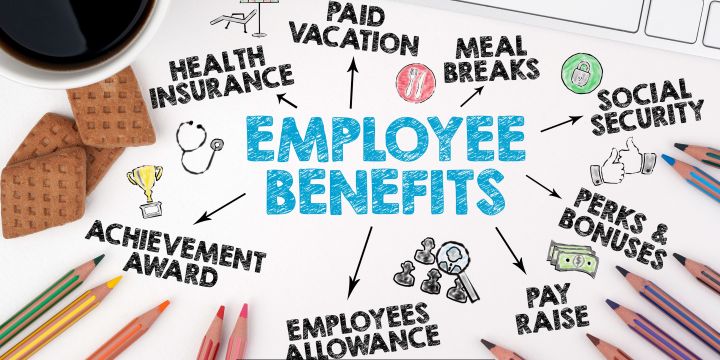Employee benefits laws are evolving rapidly in 2025, reflecting shifts in workplace demographics, technology, and healthcare demands. New regulations address issues such as expanded mental health coverage, flexible work policies, and enhanced protections for gig economy workers. Employers must adapt to updated reporting requirements, the increased use of HSAs and wellness incentives, and evolving anti-discrimination standards regarding benefits offerings. Staying informed about these changes is critical for maintaining legal compliance and supporting workforce satisfaction.
As organizations adjust to expanded mandates around eligibility, documentation, and nondiscrimination testing, many seek specialized guidance to navigate unfamiliar terrain. Engaging with experienced professionals, such as the best ERISA attorney in San Jose, can help employers better understand plan design implications, audit readiness, and potential liability concerns. With expert counsel, businesses can proactively update plan documents, educate employees, and avoid costly infractions. Clear communication and a strategic approach to benefits compliance will help employers build trust and offer valuable support to their workforce throughout the year.
Federal Updates
The SECURE 2.0 Act is a significant federal change in employee benefits law for 2025, aiming to improve retirement plan access and affordability. It increases the required minimum distribution age for retirement plans from 72 to 73, eventually reaching 75. This extension provides older workers an extended runway for tax-advantaged savings growth, offering flexibility and a firmer financial footing upon retirement. Employers can offer modest financial incentives to employees enrolling in 401(k) plans, boosting participation rates. Automatic enrollment will become a standard feature of new retirement plans in 2025, and increased catch-up contribution limits for employees aged 60 to 63 will allow late-career workers to make the most of their peak earning years and contribute more towards their retirement nest eggs.
The One Big Beautiful Bill Act (OBBBA) reshapes Health Savings Accounts (HSAs), focusing on workers aged 55 and above. Starting in 2025, employees enrolled in high-deductible health plans (HDHPs) can use HSA funds to pay for direct primary care (DPC) memberships without jeopardizing their HSA eligibility. Starting January 1, 2026, many Affordable Care Act marketplace policyholders enrolled in qualifying plans will be newly eligible to contribute to HSAs, expanding the reach of these tax-advantaged savings accounts.
State-Specific Changes
While federal rules create a baseline, many states are moving quickly to introduce or expand benefits, often setting higher standards for worker protections. In 2025, several states have rolled out notable reforms:
California
- Paid Family Leave (PFL): Effective January 1, 2025, California will boost paid family leave and disability benefits to record levels. Workers earning under $63,000 can receive up to 90% of wages, others 70%, making leave more accessible for lower-wage workers during emergencies.
- Indoor Heat Illness Prevention: New rules require cooled rest areas, monitoring indoor temperatures in heat-risk workplaces like warehouses and kitchens, plus adequate breaks and hydration for workers.
Illinois
- Pay Transparency: Beginning in 2025, Illinois law requires companies with at least 15 employees to include pay scales and comprehensive benefits information in all job listings. This aims to foster fairness and transparency in hiring and support pay equity across the state.
- Extended Filing Deadlines: The time limit for employees to file claims of workplace discrimination, harassment, or retaliation has doubled to two years, allowing more time to seek redress through the Illinois Department of Human Rights and improving access to justice for affected workers.
Minnesota
- Earned Sick and Safe Time (ESST): Employees earn one paid hour off for every 30 hours worked, up to 48 hours yearly, with a rollover of up to 80 hours. It allows workers to address health or safety needs without losing income or a job.
- Family and Medical Benefit Insurance: Minnesota’s first state insurance will offer up to 12 weeks of partial wage replacement for family or medical leave, funded by employer and employee contributions.
Health Savings Accounts (HSAs)
Health Savings Accounts (HSAs) are a powerful tax-advantaged strategy for managing long-term health care expenses, especially for individuals with high-deductible health plans. In 2025, the OBBBA provision allowing HSA funds to be used for direct primary care memberships gives employees more freedom to coordinate personalized, preventive care while maintaining HSA eligibility. Looking forward to 2026, HSA eligibility for ACA marketplace enrollees will extend to certain HDHP Bronze or catastrophic plans, meaning more Americans can utilize these valuable savings vehicles. Although the OBBBA did not include all proposed enhancements for older account holders, the flexibility and tax benefits of HSAs remain as crucial as ever. However, debates about the implications of broader Medicare funding are likely to continue.
Workers’ Compensation
Across the country, states are working to recalibrate their workers’ compensation insurance systems, striving to strike a sustainable balance between employer premium costs and adequate support for injured employees. In 2025, the National Council on Compensation Insurance (NCCI) recommended rate decreases in several states, including a 6.1% reduction in Connecticut and a significant 9.1% rate cut in West Virginia. These adjustments reflect broader national efforts to manage workers’ compensation efficiently, creating potential cost savings for employers while maintaining strong protections for workers who suffer job-related injuries or illnesses. Employers should anticipate further adjustments as states review the impact of remote and hybrid work arrangements on injury rates and claims trends.
ERISA Updates
Celebrating its 50th anniversary, the Employee Retirement Income Security Act (ERISA) remains the backbone of benefit plan protection in the United States. This year, a significant legal development under ERISA came with the Supreme Court’s overturning of the Chevron Doctrine. This legal precedent had previously granted federal agencies broad deference in interpreting statutes. This ruling will likely impact how ERISA regulations are interpreted and enforced, increasing scrutiny on plan administration decisions and requiring employers and fiduciaries to monitor emerging legal standards closely. Simultaneously, ERISA litigation is on the rise, particularly lawsuits alleging breaches of fiduciary duty or excessive retirement plan fees. This underscores the need for rigorous plan oversight, due diligence in selecting service providers, documented decision-making, and a commitment to fee transparency—all essential strategies for minimizing litigation risk and ensuring compliance.
Compliance Strategies for Employers
- Update Policies: Review all current benefits, leave, and employment policies thoroughly to ensure alignment with the latest state and federal requirements. This includes updating handbooks and making necessary amendments as soon as changes occur.
- HR Training: Continuously train HR and management staff on evolving legal requirements and best practices to ensure consistent, compliant implementation of policies and prompt recognition of potential issues.
- Transparent Employee Communication: Develop clear, timely communications that inform employees about their updated benefit options, eligibility requirements, and appeal processes so they can fully understand and utilize all available programs.
- Legal Guidance: Regularly consult with ERISA and employment law experts to navigate complex updates, manage potential litigation risks, and implement preventative measures that reduce the likelihood of compliance errors or costly disputes.
Employers that stay informed and proactive—adapting swiftly to new regulations and maintaining open communication with employees—are best positioned to navigate 2025’s regulatory complexities while building trust, retaining talent, and safeguarding their organization against compliance challenges.



